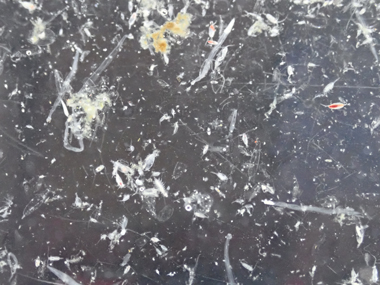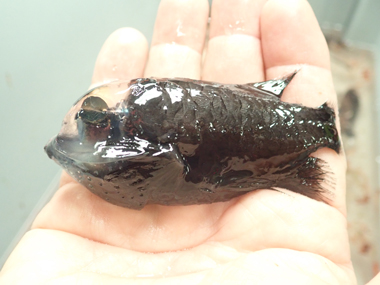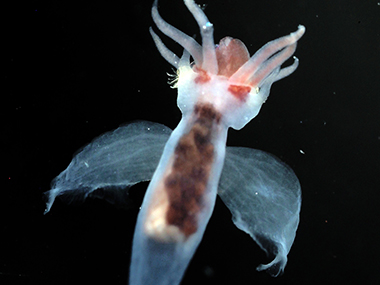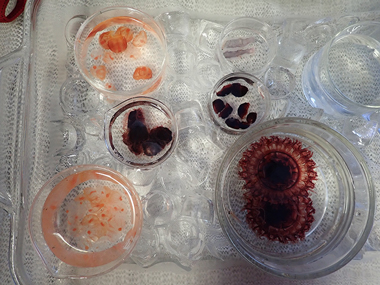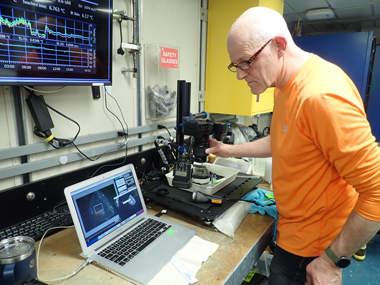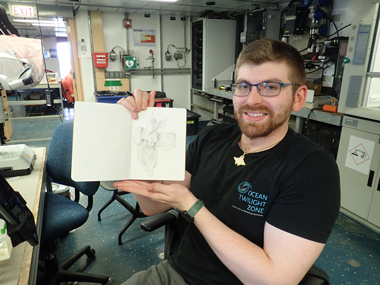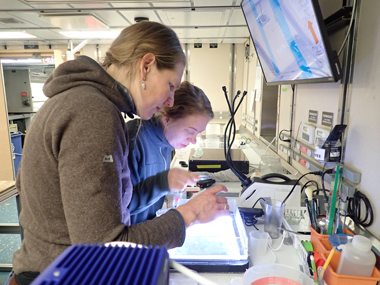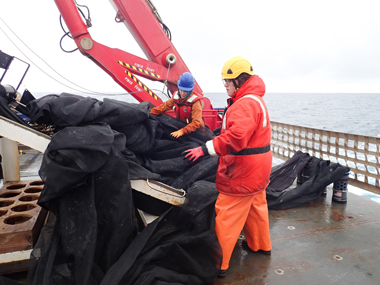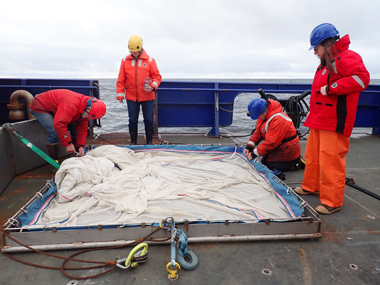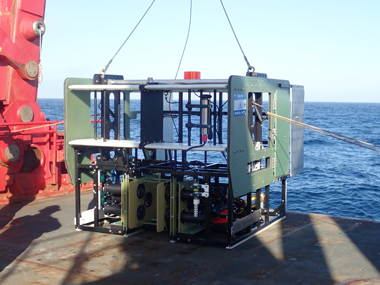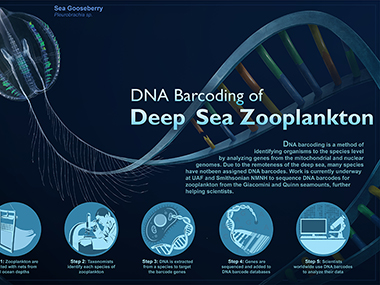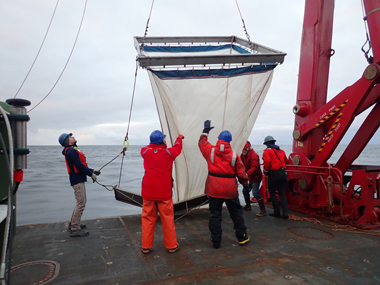Exploring Pelagic Biodiversity of the Gulf of Alaska and the Impact of Its Seamounts
Dates
May 12 - 21, 2024
Vessel
Research Vessel Sikuliaq
Location
Gulf of Alaska
Primary goal
Investigate the pelagic diversity around seamounts in the Gulf of Alaska
Primary technologies
Hydro-Bios MultiNet system, Multiple Opening/Closing Net and Environmental Sensing System (MOCNESS), Methot trawl, In-Situ Ichthyoplankton Imaging System Deep-Focus Particle Imager (ISIIS-DPI)
Expedition Summary
From May 12-21, 2024, researchers investigated the pelagic diversity in the Gulf of Alaska. Using a novel, multipronged exploration program, they inventoried the small animals (zooplankton and micronekton), like fish, crustaceans, gelatinous animals, and squid, in the water column, finding or observing many species that are new to science as well as some that were not known in the region. These discoveries occurred across the full taxonomic spectrum of zooplankton, from tiny crustaceans to large jellyfish.
The northern Gulf of Alaska is a region of high productivity and supports some of the nation’s largest commercial fisheries. But, ocean warming and deoxygenation are raising concerns about the future of the region’s poorly understood deep waters and the fish and invertebrates that live there.
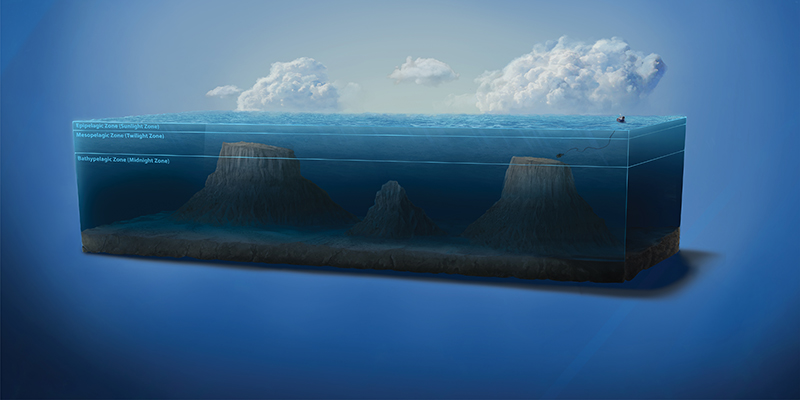
This expedition built on the team’s previous work in the region, with the goal of improving understanding of the diversity and distribution of these deep-ocean animals. To help achieve this goal, they used state-of-the-art acoustic sensing and sampling methods, including a variety of plankton net systems and a towed imaging system, with a focus on the waters around two seamounts near the edge of the U.S. Exclusive Economic Zone: Giacomini and Quinn.
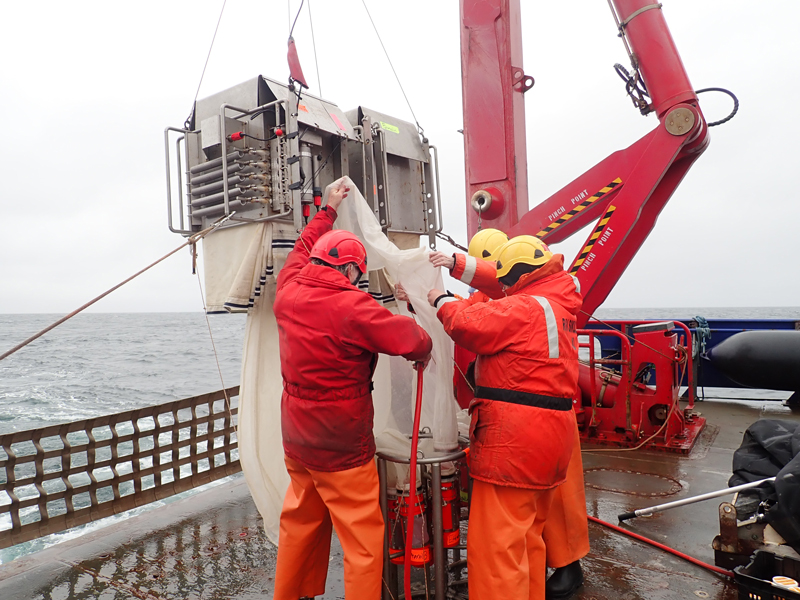
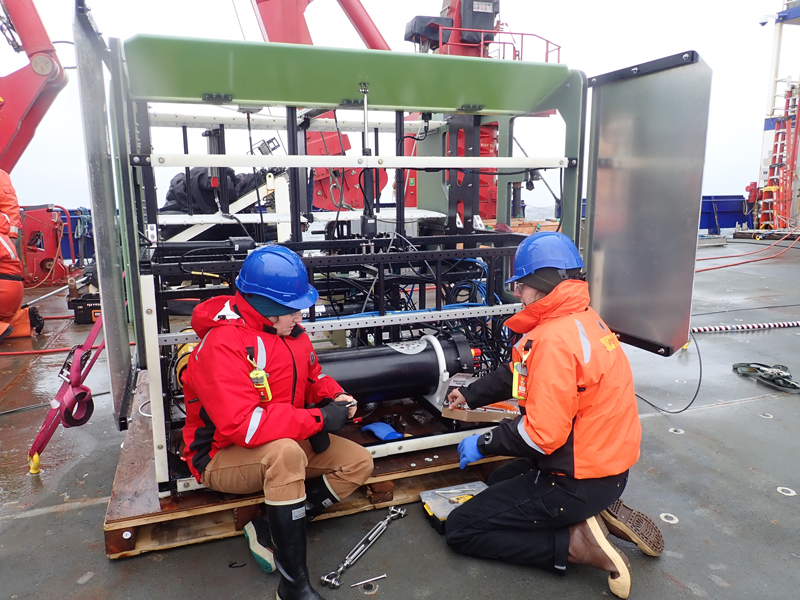
Three net systems were used to collect samples for physical and molecular (DNA) analysis and inventories. Two of the net systems enabled the researchers to open and close nets at consecutive depths, dividing the water column into layers: a tandem vertically hauled MultiNet system and a towed Multiple Opening/Closing Net and Environmental Sensing System (MOCNESS). The MultiNet (0.15 millimeter/0.006 inch-mesh nets) system targeted smaller-bodied zooplankton whereas the MOCNESS (0.505 millimeter/.02 inch-mesh nets) targeted larger-bodied zooplankton. Unfortunately, the MultiNet system was lost early in the expedition. The third system was a Methot trawl with a large net that was used to catch larger crustaceans, jellyfish, and midwater fish.
The In-Situ Ichthyoplankton Imaging System Deep-Focus Particle Imager (ISIIS-DPI) — a remotely operated towed vehicle affectionately referred to as “Big-Friend” by the students on the team — complemented the net collections. By continuously imaging the water column, the ISIIS-DPI was able to better resolve vertical patterns. It also showed that life was sparse in the deep water beyond the continental shelf.
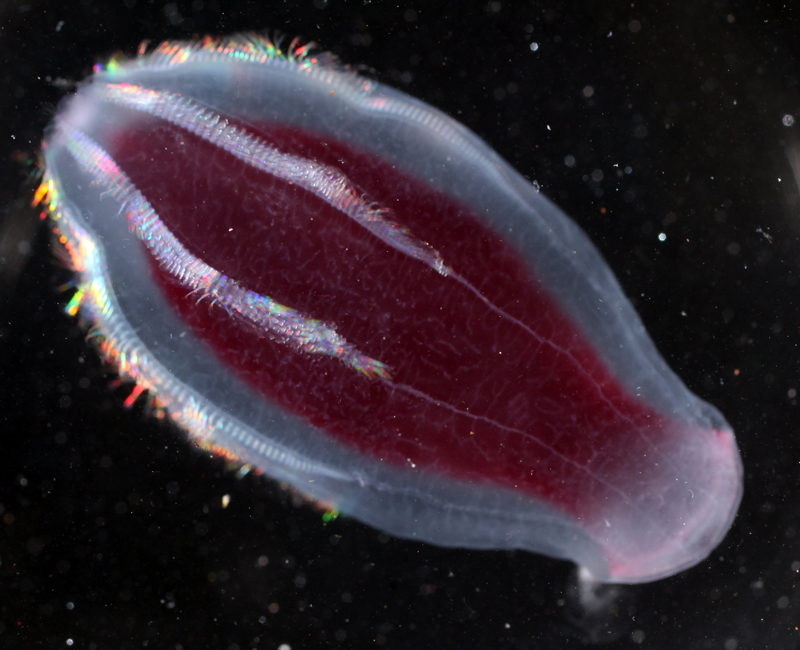
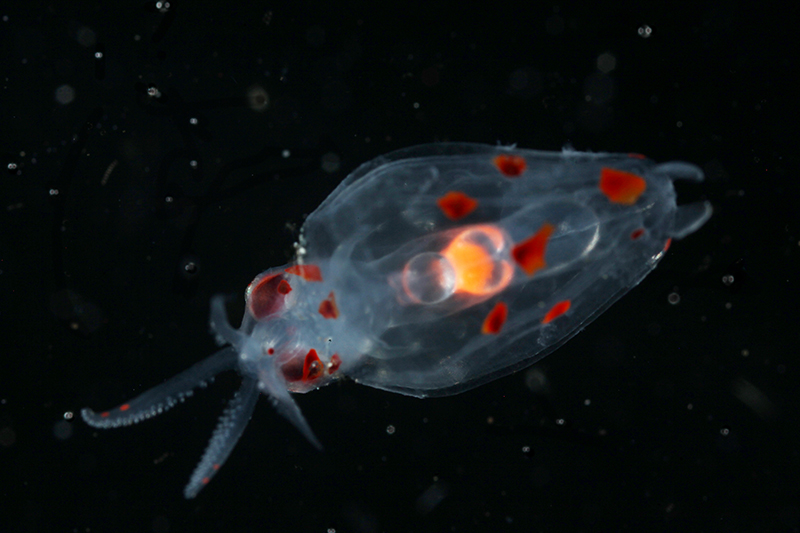
On the ship, the team sorted and processed physical samples in real time and generated genomic data for select species using a MinION sequencer (Oxford Nanopore Technologies). But that was just the beginning. Now that they’re back on land, much work remains to be done, including additional sample sorting, processing, bioinformatics, and sequencing, and training the ISIIS-DPI to recognize the deepwater species imaged using artificial intelligence.
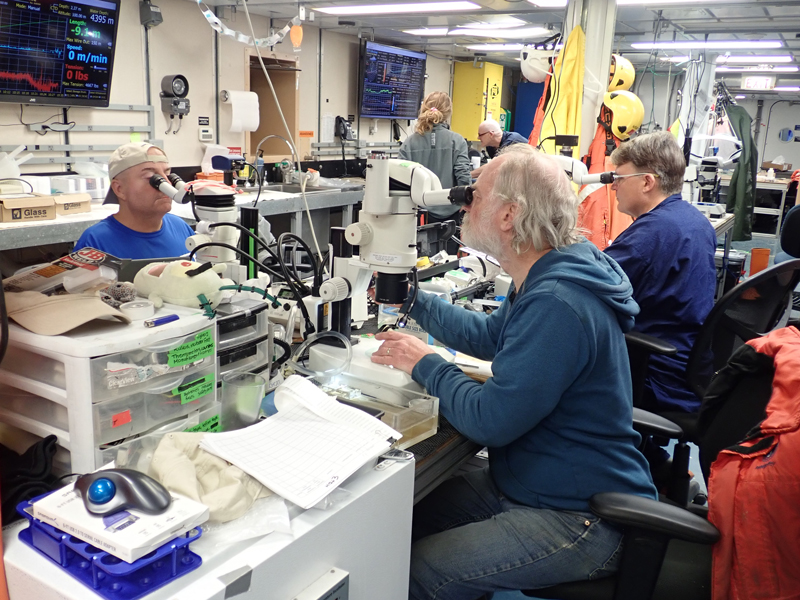
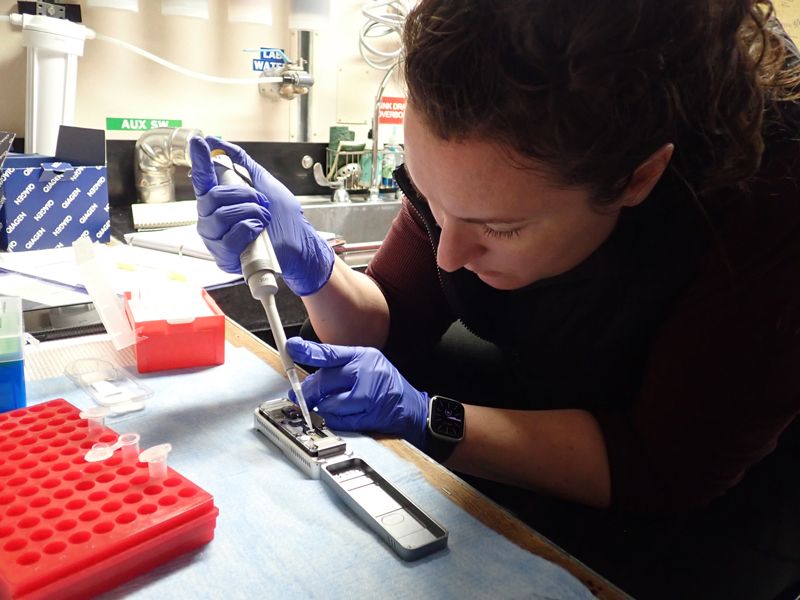
While the final outcomes of this expedition are still a way off, they are expected to improve our understanding of the ecology and biodiversity of the northern Gulf of Alaska, the connections between its shelf and ocean habitats, and its response to changing conditions. It will also help us better manage the important resources provided by the region.

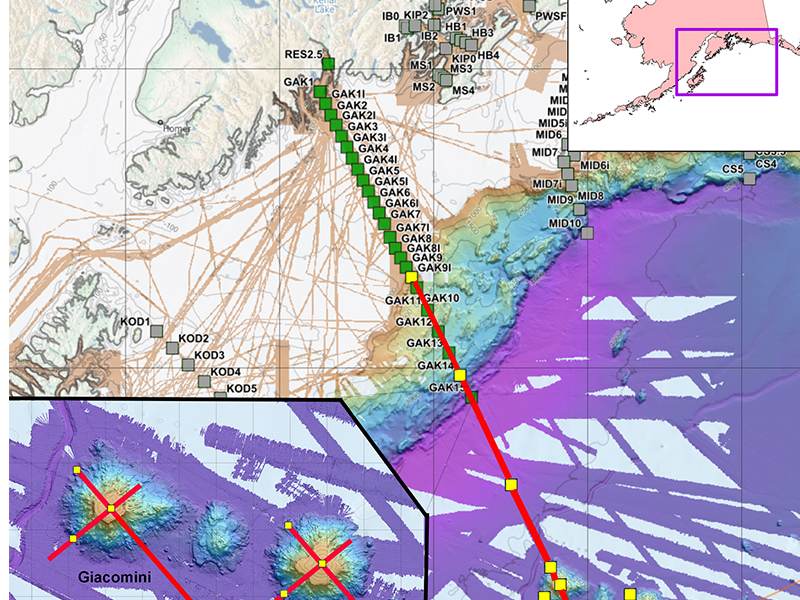
Images and Videos
Meet the Explorers

Russell Hopcroft
Principal Investigator/Professor
University of Alaska Fairbanks

Jennifer Quetzel
Co-Principal Investigator/
Research Assistant Professor
University of Alaska Fairbanks
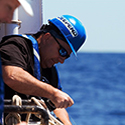
Tracey Sutton
Co-Principal Investigator/
Professor
Nova Southeastern University

Dhugal Lindsay
Senior Staff Scientist
Japan Agency for Marine-Earth Science and Technology

Allen Collins
Director/Research Zoologist
NOAA Fisheries’ National Systematics Laboratory and Smithsonian National Museum of Natural History
Education Content
Education Theme pages provide the best of what the NOAA Ocean Exploration website has to offer to support educators in the classroom related to this expedition. Each theme page includes expedition features, lessons, multimedia, career information, and associated past projects.
Related Links
Partners
- University of Alaska Fairbanks College of Fisheries and Ocean Sciences
- NOAA National Systematics Laboratory/Smithsonian Institution National Museum of Natural History
- Japan Agency for Marine-Earth Science and Technology (JAMSTEC)
- Danish Technical University, National Institute of Aquatic Resources (DTU AQUA)
- Nova Southeastern University
- University of Washington School of Aquatic and Fishery Sciences
- Institute of Oceanology, Polish Academy of Sciences
- Scripps Institution of Oceanography
Media Contacts
Emily Crum
Communications Specialist
NOAA Ocean Exploration
ocean-explore-comms@noaa.gov
Jeff Richardson
Communications Manager
University of Alaska Fairbanks College of Fisheries and Ocean Sciences
jarichardson6@alaska.edu
Funding for this expedition was provided by NOAA Ocean Exploration via its Ocean Exploration Fiscal Year 2022 Funding Opportunity and the University of Alaska Fairbanks.
Published August 14, 2024
